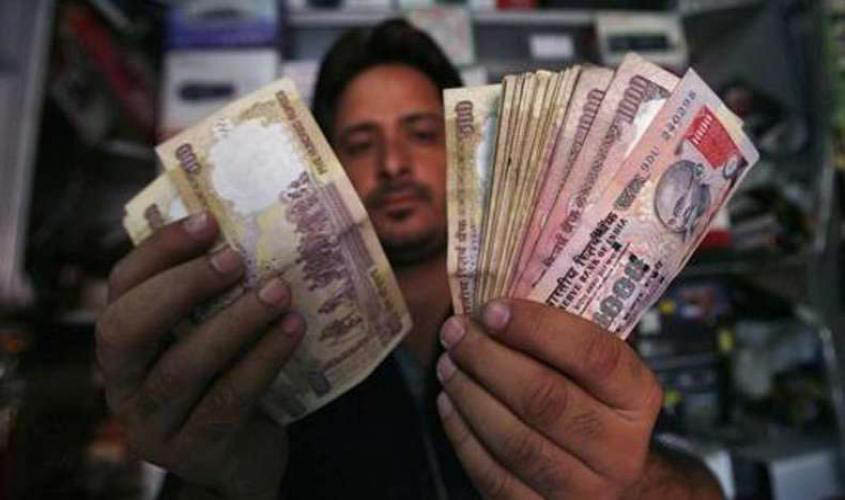 Out on a morning walk in Lodi Garden, the senior UPA minister seemed to be in a good mood. It was not hard to guess the reason for his early morning cheerfulness. The previous night the RBI numbers had nixed the high-fluting talk that had emanated from government leaders in the wake of demonetisation last November. If the critics were to call it hot air after the detailed statistics put out by the Central bank, it wouldn’t be unfair.
Out on a morning walk in Lodi Garden, the senior UPA minister seemed to be in a good mood. It was not hard to guess the reason for his early morning cheerfulness. The previous night the RBI numbers had nixed the high-fluting talk that had emanated from government leaders in the wake of demonetisation last November. If the critics were to call it hot air after the detailed statistics put out by the Central bank, it wouldn’t be unfair.Finding yours truly approaching from the opposite direction, the Congress leader could not contain his I-told-you-so moment of self-vindication, “So, virtually the entire money has come back…hardly any black money detected.” Before he could finish gloating, he was taken aback by the reaction: “This only confirms that we are beyond redemption…corruption, fraud, cheating is in our DNA…and we will fail anything aimed at making honest citizens of us Indians…”
Yes, that to my mind is the reason why demonetisation has not yielded anywhere near the Rs 3 lakh crore-plus bonanza expected by the government. A little over Rs 16,000 crore in neutralised currency is chicken feed, especially when at a conservative estimate the size of the parallel economy is said to be close to 30%. The fact that 99% of high-value notes were deposited for conversion into valid currency underlines the point that we are good at gaming the system, any system. Haven’t we frustrated a long series of amnesty schemes for converting black into white that were launched by successive governments? Who cares, seems to be the reasoning, soon there will be another such amnesty, let us carry on unbothered by the fear of taxmen who are known to be as venal as the rest of the society, isn’t it?
The truth is that the same system, which helps us generate black money, eventually helps us to get round the occasional scheme targeting the possession of black money. Bankers and taxmen had a field day helping the rich overcome the pain of notebandi. The cancer of corruption being so widespread, so deep-rooted in our body politic that we can survive, nay, thrive under the severest surgical strike against illicit money. Our living creed is: We Will Not Change.
Whether anyone likes it or not, the truth is that after the initial panic, circulation of black money in real estate, trade, industry, etc., is again visible to the naked eye, though the scale is somewhat muted. For proof you do not have to go far. Ask your neighbourhood property dealer. Or go visit Nehru Place for a computer peripheral.
The government has taken a number of steps to clean up the system, even risking the wrath of its traditional constituency. But thus far success has been partial. The latest and biggest reform in this direction is GST and the anti-bankruptcy regulatory code. However, it is surprising that sections of the organised business are already bypassing the new tax regime by devising ever new stratagems. Inherent problems in inducting large sections of trade and industry, especially in the informal sectors of the economy, into the tax regime have not been clearly resolved yet, causing hardships to even those businesses which might otherwise want to go legit.
Anyway, back to the post-mortem of notebandi. Of course, it was not a complete failure. Insofar as it meshed into the entire gamut of efforts aimed at cleaning up the system, on balance it would have a positive impact. Should even half of the nearly Rs 4 lakh crore deposited in some 1.5 lakh new bank accounts turn out to be black after due scrutiny, demonetisation would have at least paid for itself. Otherwise, the costs in lost man days, disruption in the rural economy, higher payments by the RBI to banks for the surge in cash deposits, avoidable costs of printing new notes, and a much reduced dividend for government from the Central bank, etc., are all tot up on the debit side.
New notes, old fears
Currency notes of Rs 200 denomination are already in the market. Soon these will be freely available. Also, 50-rupee notes with a new design have been introduced. The Central bank has also undertaken to print the new Rs 1,000 notes, which were withdrawn following demonetisation. Once the new Rs 1,000 notes are in circulation, speculation about the withdrawal of the Rs 2,000 notes which were introduced following notebandi will be hard to quell. Despite an official denial that there was no such move, ordinary people suspect that the government will yet again launch a “surgical strike” against black money by banning the 2,000-rupee notes. The Rs 2,000 notes now account for nearly 60% of the total money in circulation, while new Rs 500 notes are about half of the total money supply.

